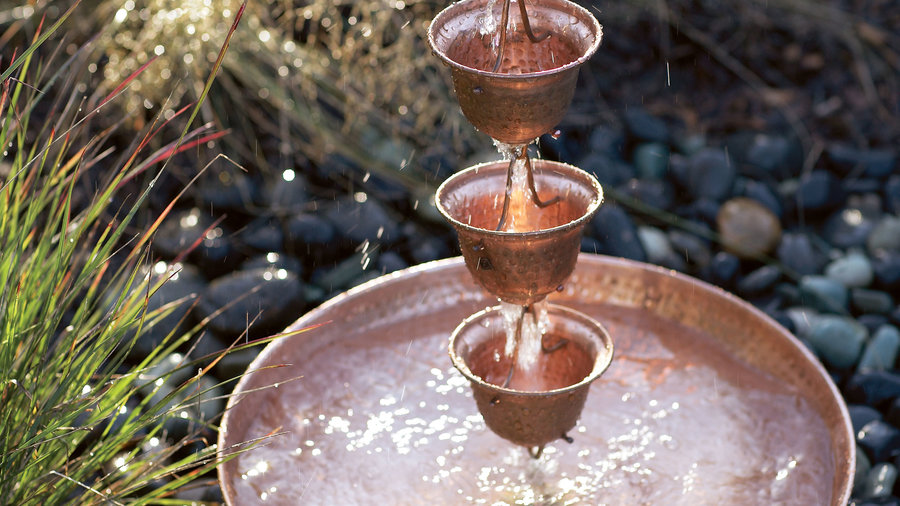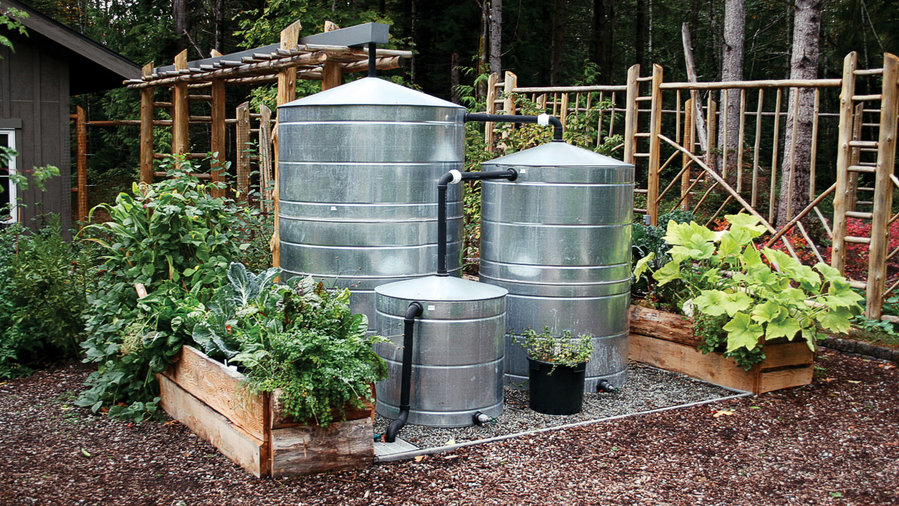Rob D. Brodman
Hang a rain chain
Rain chains replace downspouts. The 81/2-foot chain pictured spills into a 16-inch-diameter bowl (it attaches to the bowl so it won’t whip in the wind). The water then overflows slowly into a rock-covered catch basin.
INFO Copper Bells rain chain ($169) and hammered-copper dish ($45; rainchains.com or 888/480-7246)
Jim McCausland
Install a rain barrel
Rain barrels typically hold about 50 to 60 gallons each―enough to irrigate houseplants or pots on the deck. The best type is made of recycled food-grade plastic (or use a recycled wine barrel like the one pictured), with an intake line, spigot, overflow attachment, screen cover to keep out leaves, and removable solid cover.
Position the barrel beneath a downspout; to keep the rainwater pure, remove the solid cover an hour or two after rainfall has washed pollen and other pollutants off the roof.
Rain barrels cost about $100 to $150 each.
Rob D. Brodman
Add a cistern
An inch of rain puts about 600 gallons of water atop a 1,000-square-foot house. Rain gutters capture it; from a downspout, you can direct it into a cistern to help water your garden.
At Islandwood Environmental Learning Center on Bainbridge Island, Washington, three steel cisterns store rainwater from a nearby roof. By the time vegetables start growing in spring, the tanks are full and the water travels through a gravity-fed drip system to irrigate crops.
INFO Pictured cisterns are from Texas Metal Cisterns ($380 for 200-gallon size to $1,070 for 1,200-gallon size; texas metalcisterns.net).




